
The Indian National Army was a collaborationist armed unit of Indian collaborators that fought under the command of the Japanese Empire. It was founded by Mohan Singh in September 1942 in Southeast Asia during World War II.

Subhas Chandra Bose was an Indian nationalist whose defiance of British authority in India made him a hero among many Indians, but his wartime alliances with Nazi Germany and Imperial Japan left a legacy vexed by authoritarianism, anti-Semitism, and military failure. The honorific 'Netaji' was first applied to Bose in Germany in early 1942—by the Indian soldiers of the Indische Legion and by the German and Indian officials in the Special Bureau for India in Berlin. It is now used throughout India.
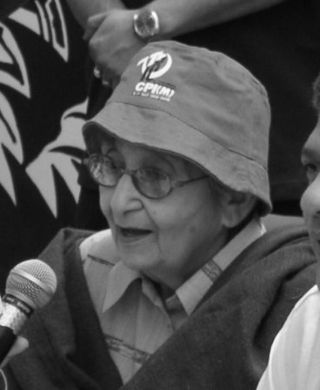
Lakshmi Sahgal was a revolutionary of the Indian independence movement, an officer of the Indian National Army, and the Minister of Women's Affairs in the Azad Hind government. Lakshmi is commonly referred to in India as Captain Lakshmi, a reference to her rank when taken prisoner in Burma during the Second World War.
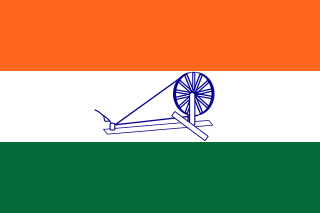
The Provisional Government of Free India or, more simply, Azad Hind, was a short-lived Japanese-controlled provisional government in India. It was established in Japanese occupied Singapore during World War II in October 1943 and has been considered a puppet state of the Empire of Japan.

Moirang is a town in the Indian state of Manipur, best known for the tentatively listed UNESCO World Heritage Sites of the Keibul Lamjao Conservation Area (KLCA), covering Keibul Lamjao National Park (KLNP), the world's only floating national park, the buffer of Loktak Lake and Pumlen Pat. It is best known for the being the place of origin of the ancient epic legend of Khamba and Thoibi, one of the seven epic cycles of incarnations of Meitei mythology and folklore. Nationwide, it is also famous for the INA War Museum in the INA Martyrs' Memorial Complex, where Colonel Shaukat Malik of the Indian National Army hoisted the Tricolour for the first time on Indian soil on 14 April 1944. It is situated approximately 45 km (28 mi) south of the state capital Imphal. It has an area of 269 km2 (104 sq mi) with a population of 62,187 in 67 villages. There are 12 Panchayats in this block.

Netaji Subhas Chandra Bose: The Forgotten Hero is a 2004 Indian epic biographical war film, written and directed by Shyam Benegal. The film starred an ensemble cast of Sachin Khedekar, Kulbhushan Kharbanda, Rajit Kapur, Arif Zakaria, and Divya Dutta, among others. The film depicts the life of the Indian Independence leader Subhas Chandra Bose in Nazi Germany: 1941–1943, and in Japanese-occupied Asia 1943–1945, and the events leading to the formation of Azad Hind Fauj.
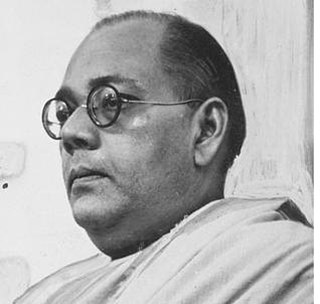
Sarat Chandra Bose was an Indian barrister and independence activist.

The Former Indian National Army Monument is a historical site and a demolished war memorial at the Esplanade Park located at Connaught Drive within the downtown of Singapore.

N. N. Pillai was an Indian playwright, actor, theatre director, orator, screenplay writer, lyricist and an I.N.A Freedom fighter. He served as Commanding Officer of Field Propaganda Unit under Netaji Subhas Chandra Bose in INA – Indian National Army. He has been given the title “Nadakacharyan” of Malayalam Theatre. through his contributions to theater as a playwright, director, actor and a producer.

The Indian National Army trials was the British Indian trial by court-martial of a number of officers of the Indian National Army (INA) between November 1945 and May 1946, on various charges of treason, torture, murder and abetment to murder, during the Second World War.
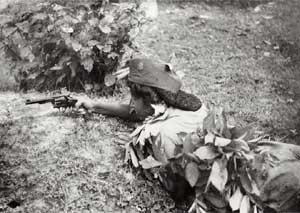
The Rani of Jhansi Regiment was the women's regiment of the Indian National Army, the armed force formed by Indian nationalists in 1942 in Southeast Asia with the aim of overthrowing the British Raj in colonial India, with Japanese assistance. It was one of the all-female combat regiments of the Second World War on all sides. Led by Captain Lakshmi Swaminathan, the unit was raised in July 1943 with volunteers from the expatriate Indian population in Southeast Asia. The unit was named the "Rani Jhansi Regiment" after Rani Lakshmi Bai, Rani of Jhansi, a renowned Indian queen and freedom fighter.
Colonel Shaukat Ali Malik was an officer of the Indian National Army notable for having led a unit of the Bahadur Group in the capture of Moirang during the initial phases of the INA's Imphal Campaign during World War II. Moirang was the first territory within India to be captured by the INA and also the first place within the mainland of India to be held by the Azad Hind Government. Col. Malik Commander of the Intelligence (Bahadur) Group of INA, planted the Indian tricolor flag at the sacred place of Moirang Kangla on 14 April 1944 at about 5 pm, where he would also narrate the history of the Azad Hind Fauj. Malik was awarded the Sardar-e-Jung for leading his troops into Moirang. Prior to joining the INA, Shaukat Malik fought in the Burma theatre as an officer in the Bahawalpur State Forces.
The First Indian National Army was the Indian National Army as it existed between February and December 1942. It was formed with Japanese aid and support after the Fall of Singapore and consisted of approximately 12,000 of the 40,000 Indian prisoners of war who were captured either during the Malayan campaign or surrendered at Singapore. It was formally proclaimed in April 1942 and declared the subordinate military wing of the Indian Independence League in June that year. The unit was formed by Mohan Singh. The unit was dissolved in December 1942 after apprehensions of Japanese motives with regards to the INA led to disagreements and distrust between Mohan Singh and INA leadership on one hand, and the League's leadership, most notably Rash Behari Bose. Later on, the leadership of the Indian National Army was handed to Subhas Chandra Bose. A large number of the INAs initial volunteers, however, later went on to join the INA in its second incarnation under Subhas Chandra Bose.
The decorations of Azad Hind were instituted by Subhas Chandra Bose while in Nazi Germany, initially for the Indian Legion, to be awarded for gallantry in the field of battle. Both Indians and Germans were eligible for the decorations. Later, the same awards were instituted by the Azad Hind provisional government for the Indian National Army during its campaign in South-East Asia.

Habib ur Rahman (1913–1978) was an army officer in the Indian National Army (INA) who was charged with "waging war against His Majesty the King Emperor". He served as Subhas Chandra Bose's chief of staff in Singapore, and accompanied Bose on his alleged last fatal flight from Taipei to Tokyo, sharing the last moments of his life. Rahman also played an important role in the First Kashmir War. Convinced that Maharaja Hari Singh was out to exterminate the Muslims of Jammu and Kashmir, he joined Major General Zaman Kiani, in launching a rebellion against the Maharaja from Gujrat in Pakistani Punjab. Rehman and his volunteer force launched an attack on the Bhimber town. But, the records of the 11th Cavalry of the Pakistan Army indicate that their efforts did not succeed, and eventually the Cavalry was responsible for conquering Bhimber.
Mairembam Koireng Singh (1915–1994), also known as Moirang Koireng, was an Indian politician and activist. Coming from the Indian National Congress, Mairembam Koireng Singh became the first Chief Minister of Manipur and he governed the state in three terms between 1963 and 1969.
The Indian National Army (INA) and its leader Subhash Chandra Bose are popular and emotive topics within India. From the time it came into public perception in India around the time of the Red Fort Trials, it found its way into the works of military historians around the world. It has been the subject of a number of projects, of academic, historical and of popular nature. Some of these are critical of the army, some — especially of the ex-INA men — are biographical or autobiographical, while still others historical and political works, that tell the story of the INA. A large number of these provide analyses of Subhas Chandra Bose and his work with the INA.
The Indian National Army (INA) was a Japanese sponsored Indian military wing in Southeast Asia during the World War II, particularly active in Singapore, that was officially formed in April 1942 and disbanded in August 1945. It was formed with the help of the Japanese forces and was made up of roughly about 45 000 Indian prisoner of war (POWs) of British Indian Army, who were captured after the fall of Singapore on 15 February 1942. It was initially formed by Rash Behari Bose who headed it till April 1942 before handing the lead of INA over to Subhas Chandra Bose in 1943.

The INA War Museum or the Indian National Army War Museum is a WWII museum in Moirang, Manipur. It is the only official WWII museum in Manipur though many other WWII museums are opened in the state. This museum is situated inside the INA Memorial Complex. The museum focuses primarily on the rise of the Indian National Army (INA) and the contributions of Subhash Chandra Bose to the Indian independence movement. This museum is the only official museum dedicated to Netaji Subhash Chandra Bose.
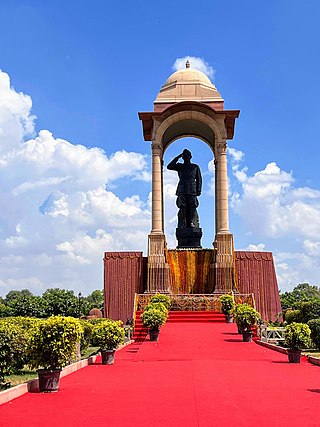
Statue of Subhas Chandra Bose, also known as the Netaji's Statue, is a monolithic statue made of black granite, dedicated to Netaji Subhas Chandra Bose, Indian freedom fighter and Commander-in-Chief of Indian National Army. The statue 28 feet (8.5 m) in total height, including a 8 feet (2.4 m) in total width. It is placed under the canopy behind India Gate in Delhi. The statue was sculpted by Mysuru-based sculptor Arun Yogiraj, whose other prominent works include the Statue of Adi Shankaracharya in Kedarnath. Prominent attendees at the dedication ceremony in 2022 included Prime Minister Narendra Modi, members of his cabinet, MP Hardeep Singh Puri, G. Kishan Reddy and Arjun Ram Meghwal.














